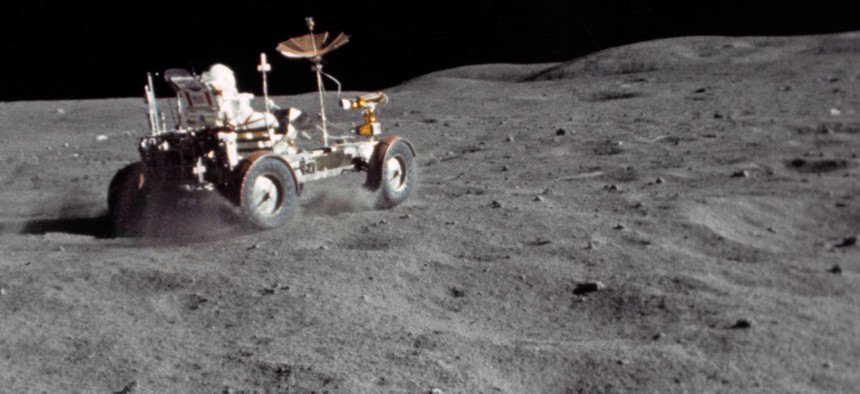NASA's Budget Woes Eclipse Plans for Another Moon Walk in 2020

NASA file photo
Americans have not set foot on the moon's surface since 1972. During his presidency, George W. Bush wanted to change that.
Americans have not set foot on the moon's surface since 1972. During his presidency, George W. Bush wanted to change that.
"We do not know where this journey will end, yet we know this: Human beings are headed into the cosmos," Bush said during a speech at NASA headquarters on Jan. 14, 2004, in Washington. "Mankind is drawn to the heavens for the same reason we were once drawn into unknown lands and across the open sea. We choose to explore space because doing so improves our lives and lifts our national spirit."
Specifically, mankind is drawn to the moon, Bush said. He proposed spending $12 billion over five years to build a spacecraft that would return humans to the moon by 2020. "Establishing an extended human presence on the moon could vastly reduce the cost of further space exploration, making possible ever more ambitious missions," he said, such as sending humans to Mars for the first time.
The 10-year anniversary of Bush's ambitious plans comes during a bleak time for U.S. space exploration.
The Space Shuttle program was dismantled in 2011, extinguishing hopes for sending American astronauts to space without collaboration with international space agencies. This year's proposed budget for NASA, outlined in an appropriations bill Monday night, was a slim $17.6 billion, just $2 billion more than it was in 2004. Although the budget includes money for asteroid detection, it shrinks funding for a planetary science program that creates and oversees missions to outer planets and moons.
The situation is not all bad, however. Last week, the Obama administration granted the International Space Station a four-year extension, promising to keep the laboratory orbiting Earth until 2024. The move has strong bipartisan support in Congress, and with people who generally do not want to see the 16-year-old station plummet to the bottom of the Pacific Ocean.
Private companies are currently working to send commercial spacecraft to the moon, some by as early as next year. But sustaining human life in zero gravity for prolonged periods of time is a baby science, so people won't come aboard just yet. For now, and likely for the next few years, the only living things headed to the moon are basil and turnips.
Correction: An earlier version of this article incorrectly reported NASA's 2004 budget. It was $15.47 billion.



